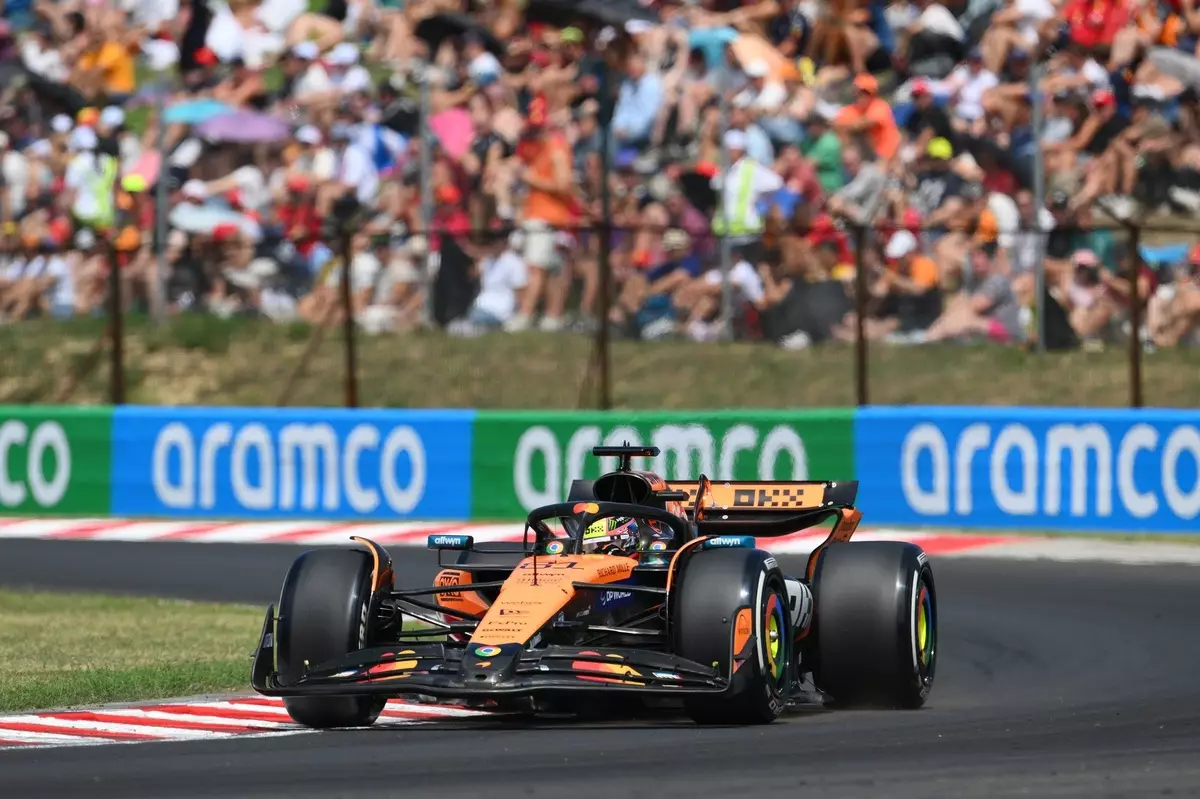In a revelation that sent shockwaves through the Formula 1 paddock, McLaren’s Oscar Piastri not only outpaced his peers but did so with a commanding display of pace during the final practice session at the Hungarian Grand Prix. This performance wasn’t merely a fleeting moment of brilliance; it signaled a strategic and technical maturity that perhaps the sport’s top teams had underestimated. To see Piastri, a young talent still finding his footing, topple seasoned veterans and established giants like Ferrari and Mercedes underscores a message about the unpredictable nature of racing; talent combined with calculated execution can tilt the scales in your favor. It became evident that McLaren has unlocked a corner of performance that others are still chasing, and this may well set the tone for what is to come in qualifying and the race itself.
The Psychological Impact of a Breakthrough Session
What makes McLaren’s commanding lap times even more remarkable is the subtle shift in team dynamics and psychological momentum. When a mid-field team like McLaren demonstrates such commanding speed, it reverberates beyond lap times—it raises questions about the reliability and consistency of other top-tier contenders. Many teams rely heavily on data from practice sessions to refine setups, and McLaren’s dominance could create a ripple effect, pressuring rivals to rethink their strategies. For Piastri, clocking a lap of 1m14.916s—almost a full second quicker than the next best—instantly alters the narrative. It breeds confidence within McLaren’s camp but also sparks a renewed sense of urgency among competitors who may have thought the midfield was a battle primarily for position rather than outright superiority.
Technical Insights: The Art of Optimize Performance
Analyzing the session reveals a meticulous orchestration of tire strategy and car setup. Piastri’s decision to switch to fresh soft tires in the dying moments of the session epitomized a calculated gamble that paid off spectacularly. The difference of over nine tenths of a second on a single lap highlights not just driver skill but the team’s precision in optimizing tire temp, track conditions, and aerodynamics. McLaren’s ability to extract maximum from their new tires at key moments demonstrates technical prowess and an understanding of the circuit’s nuances. Meanwhile, other teams like Red Bull seemed to struggle with overall balance, a reminder that raw speed isn’t enough—car setup and consistency are equally vital. McLaren’s apparent edge suggests they’ve made a significant leap in these areas, which could bring their F1 campaign from promising to championship-threatening territory.
The Broader Implications: A Wake-up Call for the Field
This practice session was more than just a fleeting snapshot; it was a stark reminder of the sport’s inherent volatility and the importance of adaptability. Ferrari, despite Charles Leclerc’s persistent third-place finishes in practice, seemed to be slightly off the pace. Meanwhile, Mercedes, often perceived as a strong contender, faced challenges with their balance, evidenced by George Russell’s mid-pack finish. The emergence of McLaren at the front disrupts the traditional pecking order, forcing rivals to rethink their approach. It’s not simply about raw speed but about pinpoint execution, strategic timing, and mental resilience. If Piastri and McLaren maintain this form into qualifying and the race, it could mark a pivotal turning point in this season’s championship dynamics—an exciting prospect for fans craving unpredictability and fresh narrative arcs.
Final Reflection: The Dawn of a New Challenger?
This session’s results challenge conventional expectations and suggest that McLaren is no longer content with being the underdog. Instead, they’re positioning themselves as genuine contenders. The key takeaway is that speed isn’t solely defined by the car’s hardware but by the collective intelligence and strategic fluidity of a racing team. Piastri’s standout performance, coupled with McLaren’s overall package, points to a future where they could alter the balance of power in Formula 1. As the grid prepares for qualifying, the shadow of McLaren’s breakthrough lingers—an ominous sign for traditional frontrunners and a thrilling development for those who revel in the sport’s unpredictability. Buckle up; if this practice session was any indication, the Hungarian Grand Prix may produce surprises that will resonate far beyond the boundaries of a single race.


Leave a Reply